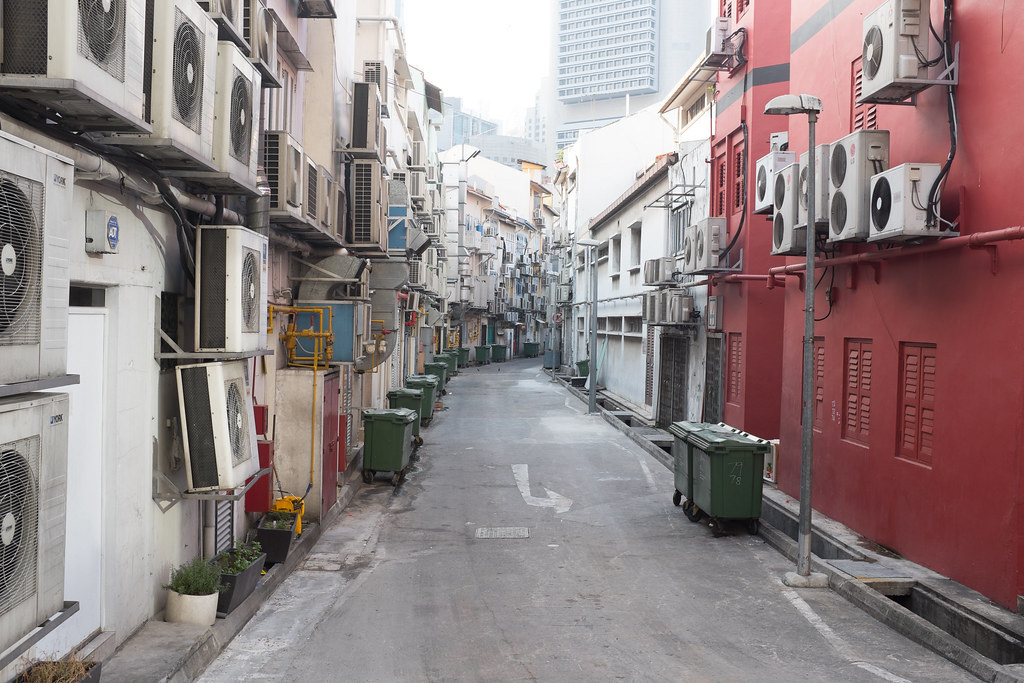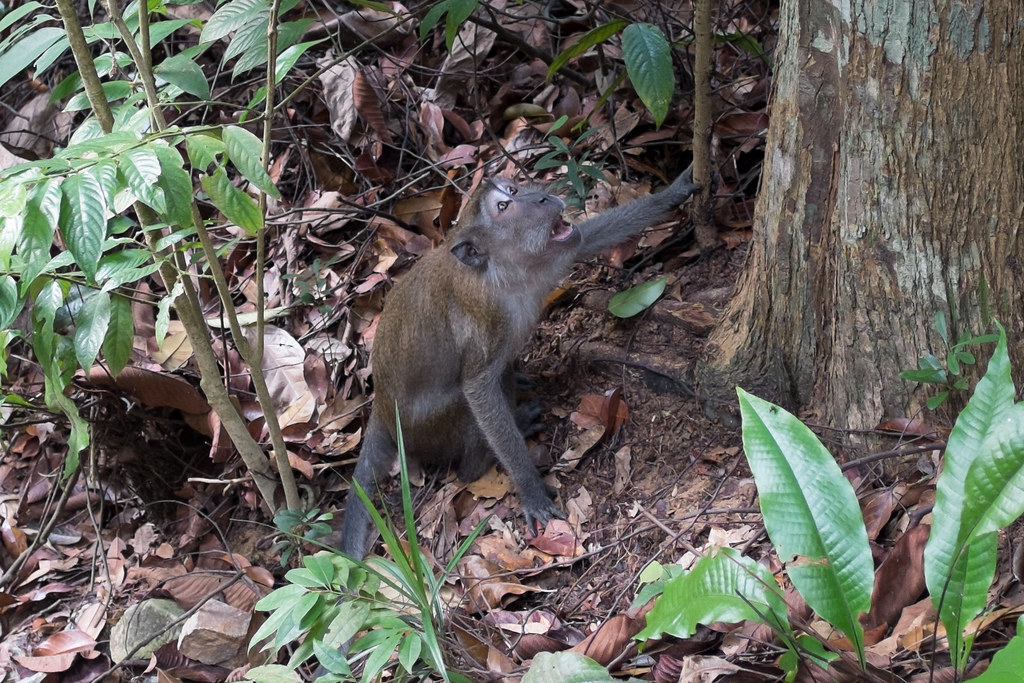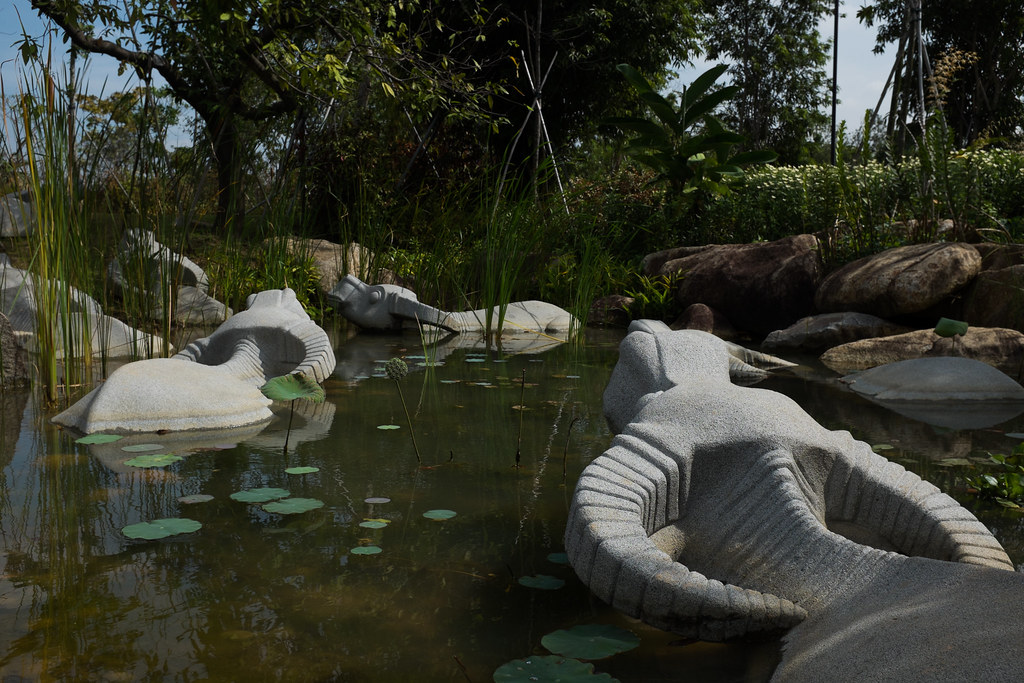Notes On Singapore
I couldn’t make my mind up about Singapore. My preconceived notions tell me that it should be clean or sterile, something about spitting or chewing gum and an overbearing police state. In immigration, I spy a notice tucked beside a computer that reenforces some of this. It reads that despite prior notices there are still employees sporting the goatee. Such facial hair along, hair that touches the collar or other outlandish styles would not be tolerated. My mind wandered, where is this outer land of lawlessness and goatees? I know that Hong Kong has the New Territories, does Singapore have the same?
Initially, I could only relate Singapore to experiences I’ve already had. So it felt like Brisbane: beyond my humidity comfort levels, a river snaking through it and a busker playing the didgeridoo on the double helix bridge. The next morning it started to feel like Kuala Lumpur. That hostile heat, friendly faces, familiar smells and that style of architecture so common in this part of the world. I can only describe it as air-conditioning cladding.

Singapore wasn’t as clean as I had conceived. It wasn’t filthy. It felt lived in. The hawker complexes are a festival of fragrances where women and men spill into the street munching down anything from frogs to tofu. I lie, no-one eats tofu. A few rare places do sell tofu. I help them out by munching on it as I push past the throngs and into the affable night of the ox-cart-water neighbourhood. Unlike the Chinatown in other cities, this one is called 牛车水 (niú chē shuǐ) which translates to ox-cart-water it’s name taken from the Bahasa-Malay name for the same area. An area that once held exactly what you would expect: oxen-led water carts. Singapore’s Chinatown serves Singaporean Chinese food rather than, I guess, Traditional Chinese. It's starting to sound less and less like China and more and more like Singapore.
The sterility is there around the Marina. Big hotels, an ostentatious mega-mall and bayside restaurants and cafes that could have been anywhere. These over-developed areas are manicured fingernails. Exactly the same as every other fingernail. The marina only saving grace is that it’s also an engineering feat. They build a big wall to cut the river off from the ocean.. After a few years the rainwater, flowing down the river and into the marina, changed it from brackish to fresh and it now supplies 10% of Singapore’s fresh water.
To explore, I took a train out to the last stop on the Punggul line. Outside of the station I was surrounded by apartment blocks; stacks of humanity in every direction. The apartments are serviced by their own light rail. I bought a ticket and took a voyage of discovery. Each stop, except one, held more of these buildings and after looking at the rail network map I could see that there were three or four more of these housing estates in Singapore with another under construction at Punggul. It would be easy to look at these housing estates and bandy about words like: sterile, uninspiring and lifeless. I’m convinced that the insides of each of these apartments reflects the uniqueness of the snowflakes living within. Given the choice between cookie-cutter apartments and unattainable home-ownership, which is what we are heading towards in Australia, what would you choose? Wikipedia tell me that home ownership in Singapore was at 90.1% in 2012. Australia was 69% in 2002.
The one stop on the Punggul light rail network that didn’t reveal more apartments was beside a river. Beyond the river lay jungle. I got off and wandered towards it. I was impressed that so close to the city, there was still jungle. A bike path was on my side of the river and every few minutes riders would go past. The only store that was open was a 24-hour bicycle ‘pit-stop’. It had a few customers and didn’t rent bikes. I feel they missed a trick there. That river, you see, is man-made. It was a canal. The jungle is probably real jungle but the area contained a 15-20km bike trail all through this jungle and along the canal. It would have been lovely to ride through it. For my consolation prize I sat down and ate Prata, a roti like product filled with, in my case, mushrooms and cheese. It was served with a curry sauce, tomato based so something similar to Rogan Josh.
On another day I caught the bus up Bukit Timah road. There are still plenty of older English houses along here. Including those with pitched roofs; a precaution against the rare but devastating Singapore snow. The bus takes me to the start of the Bukit Timah walk. The walk is not long but enjoyable. The hill has Long Tailed Macaques and over-weight shirtless Singaporean men. The macaques are on the side trails where the sweaty semi-naked men are not, so I recommend the diversions. I did miscalculate once and ended up on the far side Bukit Timah. I ended up walking all they way around the base of the bukit back to the start. I afforded me to see a few trails that were overgrown suggesting they don’t get used too often. The green is aggressive here, if Singapore stopped today it wouldn’t take long to be devoured.

In the end, I made my mind up. I like Singapore. It feels lived in, the public transport is awesome, the food is delicious and there are places to walk in nature. I could never live there. It’s just too hot, too often. As in every day.
To all those that told me to have the Chilli Crab and the Pepper Crab. I had neither, I don’t really like crab and couldn’t justify killing and eating an entire crab just to taste it the sauce.
A final note: the city of Singapore honours a man known as Sir Stamford Raffles and he was responsible for the site of Singapore and it’s early governing. When compared to his contemporaries, he wasn’t such a bad bloke. But, it’s a bit like honouring the guy who first decided where to build the house you live in now and had some say on where the servant’s quarters were kept.
